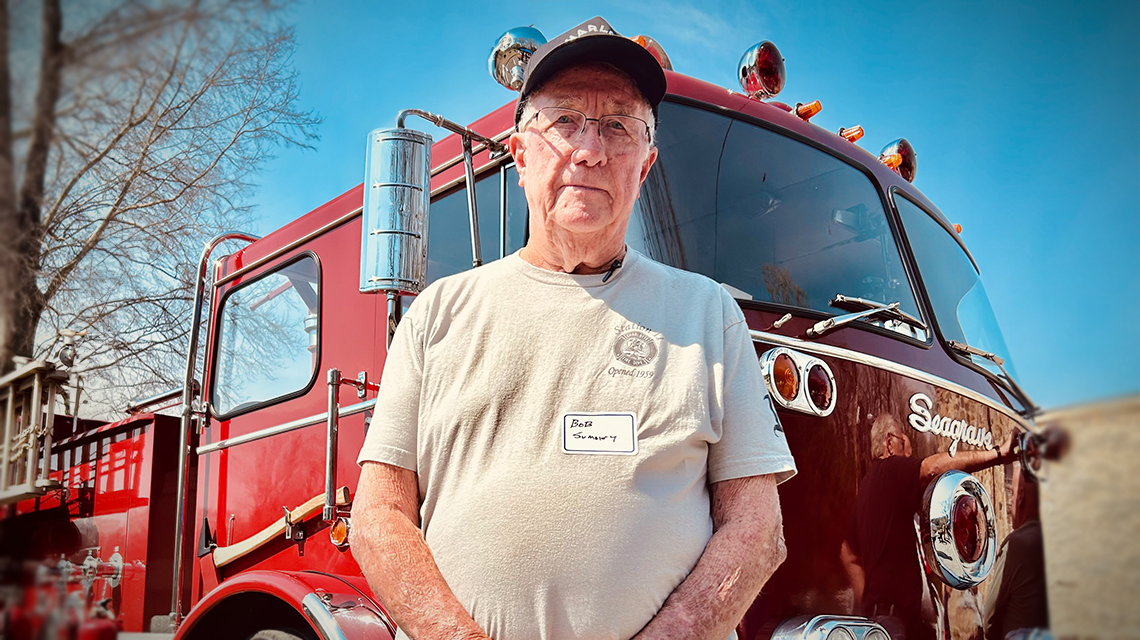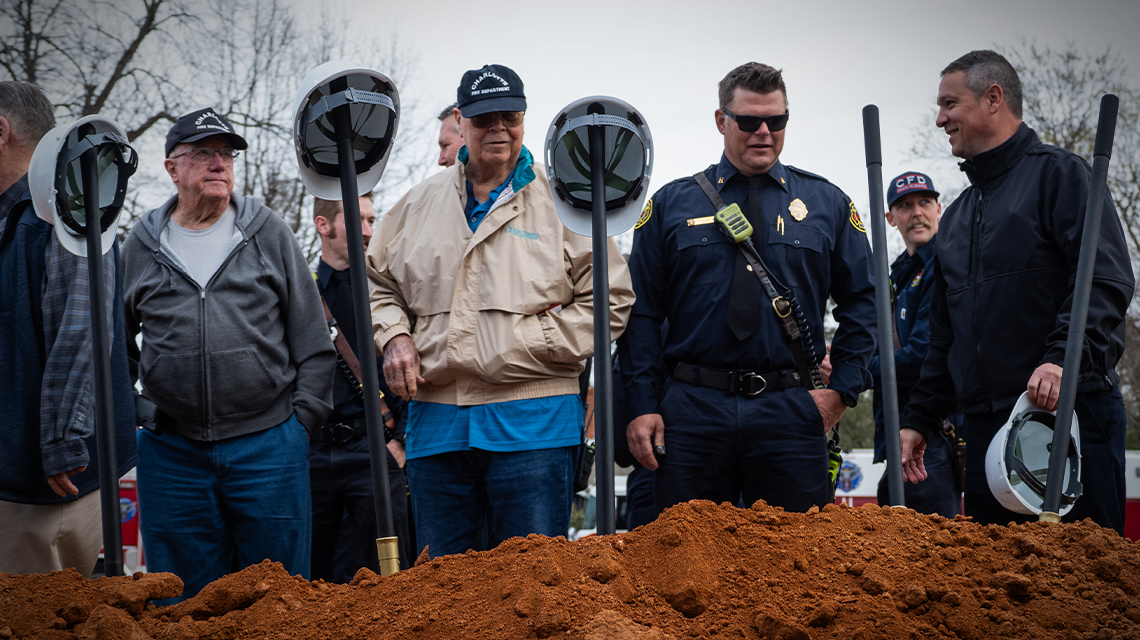A Lifetime of Service: Bob Summey’s Legacy with Charlotte Fire
Published on May 01, 2025

Bob Summey joined Charlotte Fire in 1959 and served for more than three decades. His story is a reminder that while the tools may change, the heart of the job—and the pride that comes with it—remains the same.
Bob Summey remembers the exact day he became a firefighter—May 1, 1959. He remembers the way the firehouse smelled, the weight of his gear, and the nerves that rattled him as he stepped into his first call. He also remembers the pay:
"The salary on the fire department as a rookie in nineteen fifty-nine, the salary was thirty-six hundred dollars a year. Gross. Thirty-six hundred dollars a year. That's hard to believe. But if you know it now, seventy-five dollars a week. Sixty hours. Little over a dollar or something an hour."
He chuckles at the thought now, but at the time, it was enough. More than enough, really. Because firefighting wasn’t just a job. It was a calling.
Born and raised in Charlotte, Summey grew up in a city where career options were limited.

A close-up of Bob Summey, more than 30 years after retirement, still representing Station 11 with quiet strength.
"In Charlotte, when I came along, you only had a choice of three or four things to do. It was either going back into the textile mill, going into the post office, Fire Department, Police Department, or the army."
For Summey, the fire service offered stability and purpose.
He applied to Charlotte Fire in 1958 and was officially hired on May 1, 1959. Training in those days wasn’t like it is now. Instead of a months-long academy, Summey and his fellow recruits were put directly to work.
"The recruit class that I went through was the opening of Station Eleven... We had Battalion Two, Engine Eleven, and Engine Fourteen riding out of that station."

Surrounded by friends old and new, Bob reflects on the bonds that shaped a lifetime of service.
Charlotte Fire was a different department back then. There were only two shifts, A and B platoon, and about 250 firefighters citywide.
"We fought a lot of fires. At that time, we were not into the EMS area. So strictly it was firefighting and training."
In the late 1950s and early ‘60s, Charlotte was rapidly expanding. Urban redevelopment projects were reshaping entire neighborhoods, which had a direct impact on the fire department.
"Nineteen fifty-nine and sixty, the urban redevelopment of the city of Charlotte was clearing, and a lot of the areas were either being torn down or burnt down."

The back of Bob’s shirt says it all. Firehouse 11 stood tall in Charlotte’s growing years. And now, so does its legacy.
At a time when firefighters didn’t yet respond to medical calls, Summey and his colleagues focused solely on putting out fires—many of them in homes and businesses set to be demolished.
Back then, even the hiring standards were different.
"You had to be at least five foot. You had to weigh at least a hundred and thirty pounds, and you could not wear glasses. And you had to maintain a home phone, so that if they need to get in touch with you, they would get in touch with you there."
Summey spent his first 17 years at Firehouse Eleven before transferring to Firehouse Three on Monroe Road. Later, he was assigned to Firehouse Twenty-Two on Sugar Creek Road.

The original Charlotte Fire Station 11, opened in 1959. Where Bob Summey began his career—and where the story of a new station is about to be written.
"That engine twenty-two rode out of the back door of Station Eleven for almost a year."
His career took a significant turn in 1965 when he was injured. After recovering, he transitioned to driving for a Battalion Chief.
"I went from an engine company to be a Chief’s aide or driver, and I drove the same guy for eleven years until he retired."
Over the years, Summey continued to rise through the ranks, first making Lieutenant, then Captain.

A quiet moment of reflection from a man who helped build the foundation of Charlotte Fire.
"At that time, I made Lieutenant. Later I made Captain, and in eighty-seven I left Station Twenty-Two to go to Station Eight as station commander."
Charlotte Fire Chief Reginald Johnson reflects on the kind of firefighter Summey was.
"Bob Summey represents everything we admire in a firefighter—selfless service, dedication, and an unwavering commitment to the people of Charlotte. His impact on this department is immeasurable."

At the groundbreaking of the new Firehouse 11, Bob Summey shares memories with Charlotte Fire Chief Reginald Johnson.
On December 30, 1992, Summey retired after 33 years and 8 months of service. When factoring in his sick time and unused leave, he was just six days shy of a full 35-year career.
"I mustered out with my built-up time, sick time and everything. I lacked six days having thirty-five years."
Firefighting wasn’t just a job for Summey—it was his life. And even after retirement, he remained deeply connected to the department.
That’s why, when Firehouse Eleven—the place where he spent the first 17 years of his career—was torn down, he couldn’t stay away.

Hard hats lined up, history looking on. Bob Summey watches as the new Firehouse 11 prepares to rise.
"Well, there's some feelings there, but with progress, you're not going to stop progress," he says. "The building was beginning to be... in full respect, below the standards of a first-class fire department."
But he wasn’t leaving empty-handed.
"I went over there while they were tearing it down and got me two bricks that I’m going to save."
For a man who had spent more than three decades serving Charlotte, those bricks weren’t just remnants of a building. They were pieces of his past, of every shift he worked, every fire he fought, and every friend he made along the way.

Bob returns to the grounds where Firehouse 11 once stood—this time, to witness the beginning of its next chapter.
Chief Johnson understands the significance of that moment.
"Firehouses aren’t just buildings. They hold memories and history. Bob taking those bricks—it speaks to the deep connection our firefighters have with the places they serve."
Even in retirement, Summey continues to keep up with Charlotte Fire. He watches the department grow, sees new stations open, and reflects on the changes over the years.
One thing he hopes for? To be there when a new station is built on the land where his old one once stood.
"Hopefully, I’ll be there for the dedication of the new fire station whenever it’s built."

Retired and current Charlotte firefighters gather at the site of the new Firehouse 11—honoring the past while building the future together.
His career spanned a time of immense change for Charlotte Fire. From two shifts and 250 firefighters to the large, modern department it is today, Summey witnessed—and contributed to—decades of progress.
And though he no longer suits up, his impact is still felt.
Every time an alarm sounds, every time a firefighter rushes out the door, every time a new recruit steps into a firehouse—it’s because of the groundwork laid by those who came before.
And that’s a legacy that can never be torn down.
